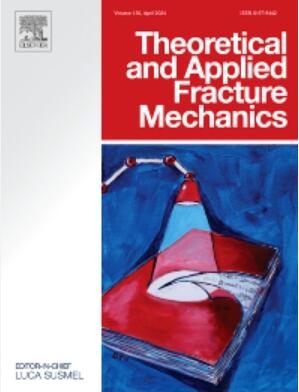Experimental and numerical investigations on the synergistic effect of plasma nitriding and notch size on the fatigue properties of AISI 4140 steel
IF 5
2区 工程技术
Q1 ENGINEERING, MECHANICAL
引用次数: 0
Abstract
Engineering structures across various sectors frequently experience fatigue damage under operational conditions, which significantly reduces their operational lifespan. Moreover, fatigue strength of the materials reduces when they have geometries such as notches and sharp corners because they constitute stress concentrations. On the other hand, different surface treatments can efficiently increase in managing the lifetime and performance of materials. In the current study, the fatigue properties of untreated and plasma nitrided notched steel samples were compared through numerical analyses and fatigue experiments. For this investigation, fatigue test specimens with different notch sizes made out of AISI 4140 steel were plasma nitrided at 460 °C and 535 °C for 9 h in a glow discharge environment. The specimens were analysed using XRD, SEM, and microhardness tester to ascertain their structural, morphological, and mechanical characterization. The notch fatigue behaviour of nitride samples was analysed numerically by the Finite Element Analysis (FEA). Furthermore, a rotational bending fatigue test system was utilized to conduct fatigue tests and consequently, fatigue date obtained from experimental results and FEA were compared. It was found that the thicknesses of compound layer and diffusion zone, compressive residual stresses, and hardness enhanced as the process temperature increased. Additionally, an increase of by up to 110 % was obtained in the notch fatigue resistance of the specimens under constant amplitude loading. According to the results obtained, it was observed that there were acceptable errors between the experimentally obtained values and the values obtained from the FEA. The results show that in all plasma nitrided notched samples, the fatigue crack initiation shifted towards the core and thus the fatigue strength increased, and especially at the increasing plasma nitriding process temperature, the R4 and R8 notch geometries exhibited better fatigue performance improvement than the other samples.
求助全文
约1分钟内获得全文
求助全文
来源期刊

Theoretical and Applied Fracture Mechanics
工程技术-工程:机械
CiteScore
8.40
自引率
18.90%
发文量
435
审稿时长
37 days
期刊介绍:
Theoretical and Applied Fracture Mechanics'' aims & scopes have been re-designed to cover both the theoretical, applied, and numerical aspects associated with those cracking related phenomena taking place, at a micro-, meso-, and macroscopic level, in materials/components/structures of any kind.
The journal aims to cover the cracking/mechanical behaviour of materials/components/structures in those situations involving both time-independent and time-dependent system of external forces/moments (such as, for instance, quasi-static, impulsive, impact, blasting, creep, contact, and fatigue loading). Since, under the above circumstances, the mechanical behaviour of cracked materials/components/structures is also affected by the environmental conditions, the journal would consider also those theoretical/experimental research works investigating the effect of external variables such as, for instance, the effect of corrosive environments as well as of high/low-temperature.
 求助内容:
求助内容: 应助结果提醒方式:
应助结果提醒方式:


